Disrupting the Illicit Market for Stolen Goods - Five Action Steps
Categories:
Written by:
Colin Peacock
Disrupting the Illicit Market for Stolen Goods - Five Action Steps
With 60+ retailers joining our May meeting, interest was high as to the different ways that retailers could go about tackling the illicit market in stolen goods.
However, as the meeting concludes, these actions require retailers invest in resources, be that lobbying groups or investigators, or data systems that support these activities.
Being able to prove the ROI of these investments to the CFO is highly problematic.
So here are the five steps that emerged from the meeting discussion.
#1. Strengthen Online Marketplace Oversight
Action: Collaborate with platforms such as Amazon, Facebook and eBay to enforce stricter seller verification and transparency.
Why it matters: Online marketplaces are a major channel for fencing stolen goods. Enhanced oversight can significantly reduce this avenue.
Implication: Platforms will require retailers bring evidence and cases, easier for retailers when it is their own product, especially new products not in stores but found for sale on their platforms, but for branded goods, very hard to prove that they are stolen or stolen from their store.
#2. Leverage Technology for Product Tracking
Action: Implement AI tools to detect suspicious listings and use unique identifiers (UIDs) or smart labels to trace products.
Why it matters: These technologies help identify stolen goods and support law enforcement investigations.
Implication: Retailers would need to invest in track & trace type technology and the data systems that can support the transparency required to prove ownership and theft from their business. One retailer in the group has such a system, a unique 15 digital number, for every unique item that is sold in their business. If their investigations, often requiring a test purchase, prove that the item was NOT sold, there can be a case for possible prosecution.
#3. Partner with Law Enforcement and Policymakers
Action: Advocate for stronger legislation (e.g., INFORM Consumers Act), consistent enforcement, and tougher penalties for organized retail crime.
Why it matters: Elevating the issue on political agendas ensures systemic support and deterrence.
Implication: Retailers need to make the case for the disruption of this illicit market in stolen goods to be prioritised with their government relations teams. With so many competing priorities, often this strategy is relegated.
#4. Secure the Supply Chain
Action: Conduct risk assessments, enhance cargo tracking, and coordinate with logistics partners to prevent theft and fraud.
Why it matters: A secure supply chain reduces opportunities for goods to be stolen before reaching stores.
Implication: This is a strategy within the "gift" of the loss prevention teams for most retailers, and arguably part of "business as usual", however managing cargo theft risks and the investigations and possible "stings" that could follow require a lot of resource and coordination with law enforcement if successful actions are to follow.
#5. Launch Retailer Merchant Awareness Campaigns
Action: Educate the retail buyers and merchants on the consequences of buying stolen goods and how continued "demand signals" from their desks for cut price hot products can fuel greater theft from stores.
Why it matters: Reducing demand from the retailers buying desk is critical to shrinking the illicit market. In fact, previous cases have shown that retail buyers have bought back hot products stolen from their own stores. If it seems too good to be true, it probably is!
Implication: This requires the retail loss prevention teams to convince the buyers to desist from the buying practices that help the buyers deliver their KPI's, namely higher gross margin / lower costs of goods.
If you would like to participate in future working group meetings on retail loss, safety and security please click here to see the research and next meetings.
May 31, 2025
Main office
ECR Community a.s.b.l
Upcoming Meetings
Join Our Mailing List
Subscribe© 2023 ECR Retails Loss. All Rights Reserved|Privacy Policy
